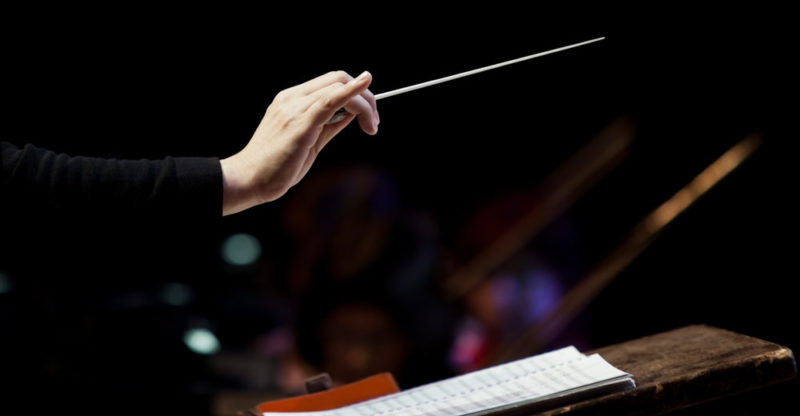We explain what music is, what its principles are and how it is classified. Also, its general characteristics, history and more.
What is music?
Music is understood to be the art of organizing a set of sounds and silences in a logical and sensitive way , according to the principles of harmony, melody and rhythm. These principles have changed over time, which has allowed various artistic manifestations and explorations, which have in common the desire to move or produce an aesthetic effect on the listener.
Music has accompanied man since time immemorial , both in his religious and social rites and serves as a vehicle for various cultural messages, from national anthems to ecclesiastical liturgies.
The term "music" comes from the Greek mousikë , which means "the art of the muses", since in this ancient culture it was supposed to be the fruit of divine inspiration. In this culture, the muse in charge of inspiring musicians was Euterpe.
Definition of Music
The traditional way of understanding music is the technique of using sounds and silences for aesthetic purposes .
This means that it is one of the nine (or seven, depending on the version) Fine Arts , and it is produced from the execution of various instruments, either in an ordered ensemble or in a solitary manner.
Musical principles

The musical principles or foundations are:
- Melody. Melody is called the successive or sequential order of sounds and silences, the combination of which gives them their own and recognizable identity. It is equivalent to the syntax of language , that is, to the art of constructing a well-done phrase, and to a horizontal conception of music.
- Harmony. Harmony is the ability to match two or more sounds together, or to integrate them nicely with those that will sound next. Represents a vertical look at music.
- Metrics. It refers to the repetition of equal or similar intervals of sounds and silences throughout a melody.
- Rhythm. It is the ability to generate musical contrasts, using the above elements and the various sound textures, tones, timbres and variations that the author introduces.
Musical notes
Music can be "written" or simply thought of in minimal units of sound sense called notes. The traditional scale (the "musical alphabet") is made up of seven notes arranged from lowest to highest: do, re, mi, fa, sol, la, si.
These can be used alone or in conjunction with the others, to compose the various sounds required in a performance.
Types of music

There are many ways to classify music, according to its matrix of rhythms, its instruments used, its origin and provenance, or the level of artistic complexity that they pursue. In principle we can talk about:
- Classical or academic music. This music is the result of the great western musical traditions (mostly European) and their derivations, instrumental or not, intended for listening rather than dancing .
- Popular music. A broad genre that represents a certain feeling of the popular masses and includes all musical styles not traditionally appreciated by academia and scholarly criticism.
- Instrumental music. That which is performed without the intervention of the human voice, that is, without singing.
- Vocal music. The one in which the human voice intervenes .
- Dramatic music. Musical works in which the singers also represent a series of characters in an almost theatrical work, such as the opera.
- Religious music. That which accompanies the ecclesiastical or mystical rites of a specific culture or sect.
- Incidental music. Music that accompanies audiovisual productions of another nature, such as theater , dance or television , or even films and video games.
- Folk or ethnic music. That linked to the values or feelings of a culture or a specific society . This is a much disputed term, since it starts from the existence of a "universal" and a "local" music, the former being that of the ruling world classes.
- Twelve-tone music. A type of avant-garde classical music that tried to break the parameters of music and create a new language to understand this art.
Musical writing

Music can be "written" using a notation technique that allows a performer to read and play it without the need for its author to be present , just as a literary text is read .
The most widely used of these notation systems is the western chart, which consists of a staff (five lines) on which the various notes are inscribed by means of specific signs, located spatially according to their sequence, time and melody.
Musical time
The measure is called the regularity with which the notes of the same melody appear in time , that is, their “acceleration”.
The same melody can be played with a faster or slower measure , without altering the notes but giving it a totally different rhythm and feel.
Music history

The vast history of music is usually understood in the following periods, at least in the West:
- Prehistoric music. All the primitive manifestations that ancient man used in a ritual and social way, as part of his ceremonies or as an inspiration for his wars.
- Old music. The one that belonged to ancient civilizations ( Greek , Egyptian , Mesopotamian , Roman or ancient Chinese), the cradle of modern society .
- Medieval music. The one belonging to the Middle Ages and the centuries in which the Christian Catholic Church controlled Western thought.
- Renaissance music. Characteristic of the Renaissance of European culture, begun in Venice during the 15th century.
- Classical music. Also called Baroque music , it belongs to the Europe of the seventeenth and first half of the eighteenth centuries. It is divided into Early Baroque, Middle Baroque, and Late Baroque.
- Classicist music. It is the transitional music between the baroque style and a new trend more balanced in terms of structure and melody.
- Romantic music. The music belonging to the era of Romanticism (end of the 18th century to the mid-19th century), which embraced the values of nationalism , subjectivism and lyricism of this artistic movement contrary to the illustration .
- Impressionist music. Emerging in the late 19th and early 20th centuries , the Impressionist style was particularly important in France , and the search for new timbres was proposed to enrich the music of the time.
- Modern and contemporary music. All the music that emerged from the end of the 19th century to the present time.
Importance of music

Music is one of the most central artistic forms in human civilization , and it allows a greater degree of autonomy in its mode of representation, since it uses totally abstract content (sounds and eventually words). Since ancient times it has been considered one of the main known art forms.
Benefits of music
Numerous investigations link music to neurological, emotional and psychological benefits, even going so far as to affirm that musical harmony has positive impacts on the development of plant and animal life .
Links with other arts

Music has had a close relationship with dance and drama , in a search for integration of both expressive forms.
Their relationship with literature is more distant , although they often share imaginary, and it is usual in other arts such as cinema or theater, which they serve as accompaniment and generation of an atmosphere.
The above content published at Collaborative Research Group is for informational and educational purposes only and has been developed by referring reliable sources and recommendations from technology experts. We do not have any contact with official entities nor do we intend to replace the information that they emit.
Luke is passionate about fostering student involvement and connection. He studied psychology for his major and likes learning about the past. Luke aims to specialize in artificial intelligence and cybersecurity. .
Leave a reply
Your email address will not be published. Required fields are marked *Recent post

Sport: What Is It, Types, Risks, Features, Characteristics and Examples

Dogs: Emergence, Features, Characteristics, Feeding and Breeds

Story: Definition, Elements, Structure, Features and Characteristics

